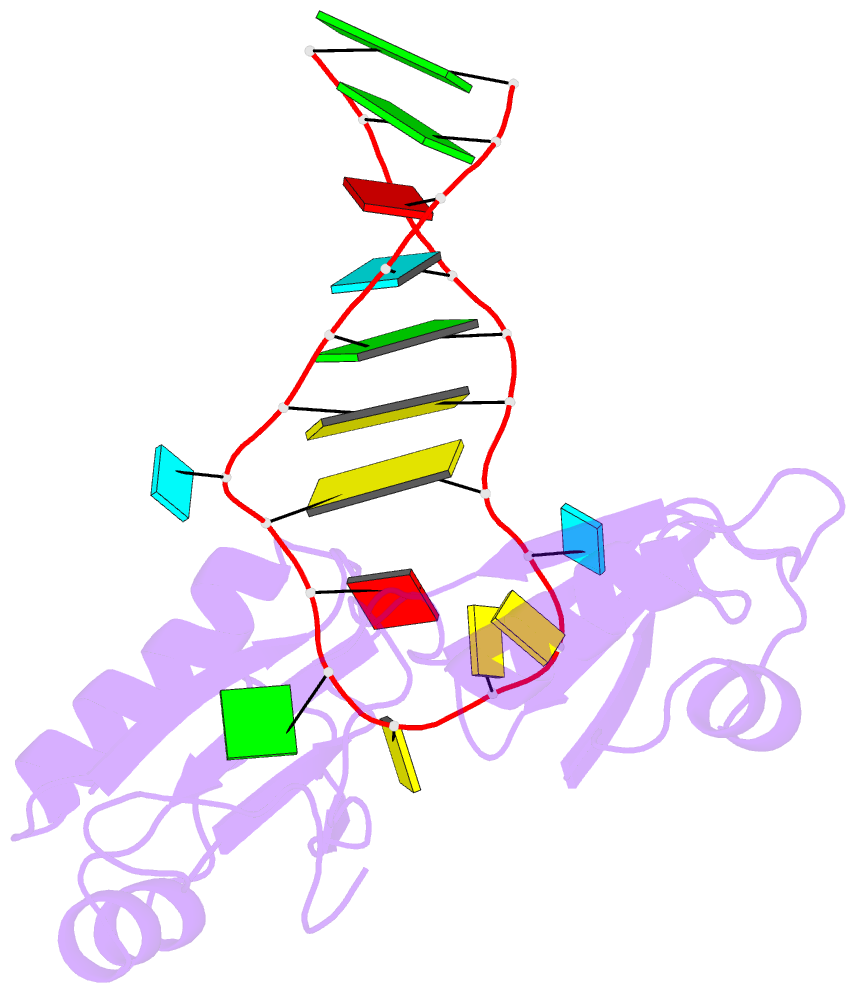Summary information and primary citation
- PDB-id
- 1rkj; SNAP-derived features in text and JSON formats;
DNAproDB
- Class
- transcription-RNA
- Method
- NMR
- Summary
- Solution structure of the complex formed by the two n-terminal RNA-binding domains of nucleolin and a pre-rrna target
- Reference
- Johansson C, Finger LD, Trantirek L, Mueller TD, Kim S, Laird-Offringa IA, Feigon J (2004): "Solution structure of the complex formed by the two N-terminal RNA-binding domains of nucleolin and a pre-rRNA target." J.Mol.Biol., 337, 799-816. doi: 10.1016/j.jmb.2004.01.056.
- Abstract
- Nucleolin is a 70 kDa multidomain protein involved in several steps of eukaryotic ribosome biogenesis. In vitro selection in combination with mutagenesis and structural analysis identified binding sites in pre-rRNA with the consensus (U/G)CCCG(A/G) in the context of a hairpin structure, the nucleolin recognition element (NRE). The central region of the protein contains four tandem RNA-binding domains (RBDs), of which the first two are responsible for the RNA-binding specificity and affinity for NREs. Here, we present the solution structure of the 28 kDa complex formed by the two N-terminal RNA-binding domains of nucleolin (RBD12) and a natural pre-rRNA target, b2NRE. The structure demonstrates that the sequence-specific recognition of the pre-rRNA NRE is achieved by intermolecular hydrogen bonds and stacking interactions involving mainly the beta-sheet surfaces of the two RBDs and the linker residues. A comparison with our previously determined NMR structure of RBD12 in complex with an in vitro selected RNA target, sNRE, shows that although the sequence-specific recognition of the loop consensus nucleotides is the same in the two complexes, they differ in several aspects. While the protein makes numerous specific contacts to the non-consensus nucleotides in the loop E motif (S-turn) in the upper part of the sNRE stem, nucleolin RBD12 contacts only consensus nucleotides in b2NRE. The absence of these upper stem contacts from the RBD12/b2NRE complex results in a much less stable complex, as demonstrated by kinetic analyses. The role of the loop E motif in high-affinity binding is supported by gel-shift analyses with a series of sNRE mutants. The less stable interaction of RBD12 with the natural RNA target is consistent with the proposed role of nucleolin as a chaperone that interacts transiently with pre-rRNA to prevent misfolding.





